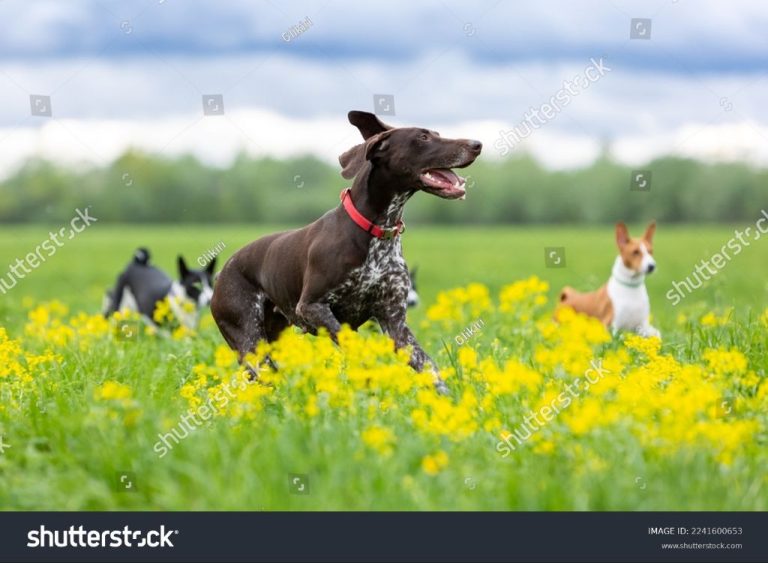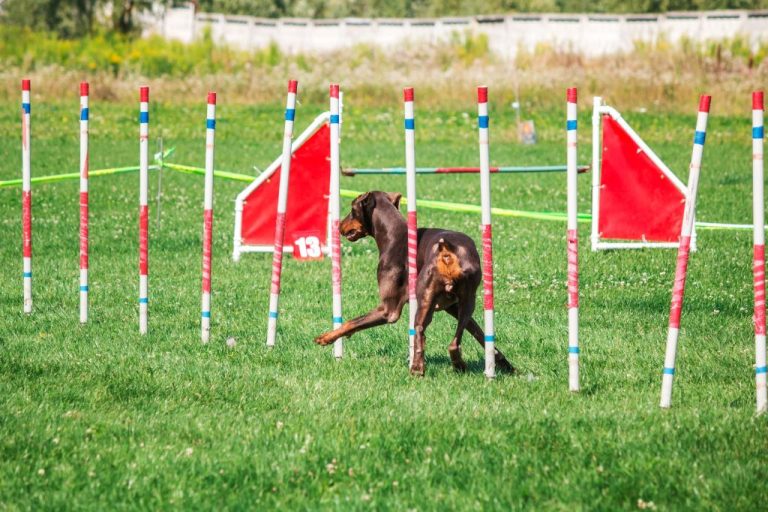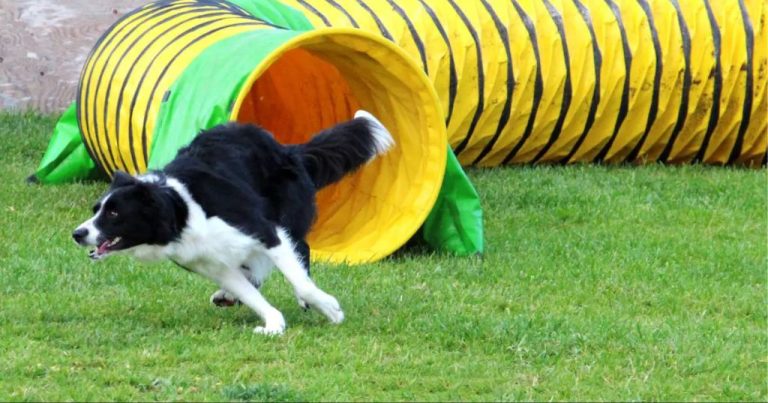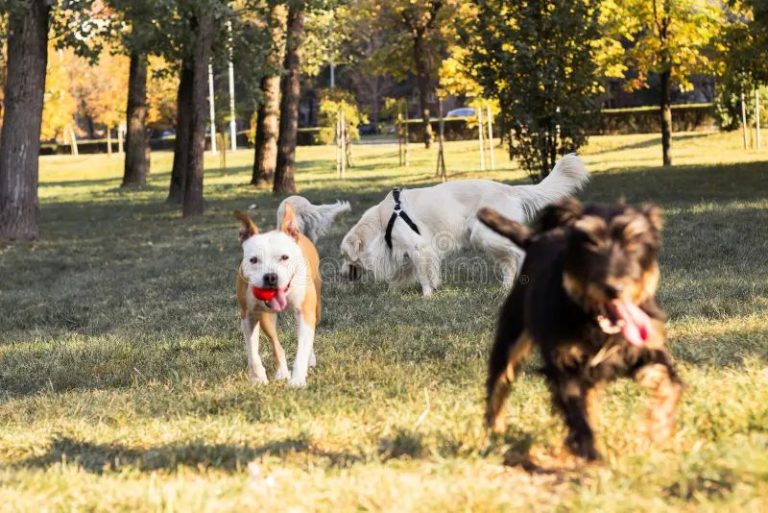Interactive Feeding Toys: Mealtime Fun For Dogs

Interactive feeding toys provide mental stimulation and enrichment for dogs while allowing them to eat. These toys engage a dog’s natural instincts to hunt, forage, and work for food. Unlike a regular bowl, interactive toys slow down fast eaters, ease boredom and anxiety, encourage play, and provide physical and mental exercise. With so many benefits, interactive feeders are a great way to enhance a dog’s mealtime and overall wellbeing.
There are many types of interactive feeding toys on the market designed for dogs of all sizes, ages, and chewing habits. From puzzles and mazes to treat balls and snuffle mats, these engaging toys transform meals into a fun challenge. As dogs roll, bounce, flip, or otherwise manipulate the toys to release kibble or treats, they get both mental and physical exercise.
This guide will explore the benefits of interactive feeders for dogs, provide tips for choosing the right interactive feeding toy, and recommend some top toys on the market. With the right interactive feeder, owners can provide their dogs with enrichment, slow down fast eaters, ease anxiety and boredom, and add some fun to mealtimes.
Slow Down Fast Eaters
Dogs that eat too fast risk gulping down air along with their food, which can lead to potentially dangerous digestive issues like bloat or gas. Interactive feeding toys help slow down fast eaters by forcing dogs to work for their kibble piece by piece rather than scarfing it all down at once. The food dispensing mechanisms in these toys regulate the flow of kibble, preventing dogs from gobbling down their entire meal in just seconds. This gives dogs more time to chew their food and promotes healthy digestion. According to TRIXIE, their feeding toys can slow down mealtime up to 10 times versus a traditional bowl, giving fast eaters the opportunity to pace themselves. Slowing down eating prevents dogs from inhaling air as they wolf down food, thereby reducing their risk of dangerous bloating or gas buildup.
Provide Mental Stimulation
Interactive dog puzzle toys and games are designed to mentally stimulate dogs and provide an outlet for their natural instincts. As My Intelligent Pets notes, puzzle toys “challenge your pet’s mental abilities and provide them with a fun and engaging way to stay mentally stimulated.” Dogs have an innate desire to hunt, forage, and problem solve. Puzzles and games tap into these natural drives by mimicking the challenge of hunting prey. Dogs get to put their powerful sense of smell and their clever problem-solving abilities to work. This gives them a job to do and satisfies their need for mental exercise.
Interactive feeding toys engage a dog’s natural curiosity and desire to work for food. Having to manipulate toys and solve puzzles in order to earn treats taps into a dog’s primal foraging instincts. Nina Ottosson dog puzzles like those sold on Amazon require dogs to slide, lift, or flip lids, drawers, and discs to reveal hidden treats. More advanced options, as recommended by Rover, add multiple steps and higher levels of difficulty.
Prevent Boredom and Anxiety
Interactive feeding toys can be very helpful for keeping dogs engaged and reducing stress when left alone. Dogs are social animals that can become anxious or depressed when separated from their family members for long periods of time. This anxiety and boredom may lead to problem behaviors like excessive barking, chewing, or elimination inside the home (source: https://www.rover.com/blog/dog-toys-for-separation-anxiety/).
Interactive toys that dispense food or treats serve as a positive distraction during alone time. The mental and physical stimulation keeps dogs focused on play, rather than dwelling on separation. This prevents boredom from setting in and stops anxious behaviors before they start. Interactive feeders engage a dog’s natural foraging instincts and make mealtime more challenging and rewarding (source: https://www.amazon.com/dog-separation-anxiety-toys/s?k=dog+separation+anxiety+toys).
Owners can fill the toy with the dog’s regular kibble or mix in treats to make the experience even more engaging. The dog will be thoroughly occupied trying to get the food out, providing crucial mental and physical activity during time spent alone at home. This is a healthy outlet that prevents stress and destructive behaviors resulting from boredom or separation anxiety.
Encourage Natural Foraging
Interactive feeding toys can help mimic the experience of seeking food in nature. Dogs are natural foragers with instincts to use their nose to sniff out food. Allowing them to tap into these natural instincts provides enrichment. Snuffle mats, maze toys, and food puzzle toys encourage dogs to forage for their food, rather than gulping it down from a bowl. This satisfies their natural desires and makes mealtimes more engaging and rewarding.
Research shows that interactive feeding replicates the experience of seeking food in the wild. Snuffle mats and foraging toys are often designed to simulate grass, underbrush, or other natural environments. By hiding food within these interactive toys, dogs must root around with their nose just as their ancestors once hunted for meals. Mimicking natural foraging provides dogs with physical and mental stimulation that bowl feeding does not.
Furthermore, the American Kennel Club recommends interactive feeding as enrichment that taps into natural instincts. Allowing your dog to forage helps prevent boredom and satisfies innate needs to use their nose, search, and work for food. Overall, interactive toys create a more enriching experience that provides dogs with purposeful activity at mealtimes.
Types of Interactive Feeding Toys
Interactive feeding toys come in many different styles that encourage dogs to work for their food in different ways. Here are some of the main categories:
Treat Dispensing Toys
Treat dispensing toys are designed so dogs have to figure out how to move the toy in a certain way to get treats to fall out. Popular styles include:
– Puzzle toys like the Nina Ottosson Puzzle Brick where dogs have to slide compartments and flip lids to find hidden treats.
– Wobbling toys like the StarMark Bob-A-Lot that wobble and drop treats as dogs bat them around.
Hidden Food Toys
These toys have little nooks and crannies where you can hide food. Dogs have to sniff out the treats and work to get them out. Types include:
– Plush toys like hide-a-squirrel or hide-a-bee toys where you stuff treats into pockets inside the plush figures.
– Rubber toys with holes like the KONG Gyro where you can put treats or peanut butter inside.
Rocking Toys
These toys rock or wobble when dogs play with them, releasing treats. The instability challenges dogs’ balance and coordination as they try to get the treats out. Examples are:
– Smarter Toys Treat Ball that rocks back and forth.
– The Trixie Mushroom toy that wobbles and dispenses treats.
Choosing the Right Toy
When selecting an interactive feeding toy for your dog, there are several important factors to consider:
Dog Size – Make sure to choose a toy that is appropriately sized for your dog. Toys that are too small can easily be swallowed while those too large may be difficult for your dog to manipulate.
Level of Difficulty – Start with easier toys and gradually increase the level of challenge as your dog masters them. More difficult toys like puzzle feeders require dogs to solve problems and think critically.
Individual Interests – Observe which kinds of toys your dog prefers such as tug-of-war style, chase and fetch, hide-and-seek, etc. Provide a variety to stimulate different natural behaviors.
Safety Features – Opt for durable, nontoxic materials like rubber or hard plastic. Toys should not have small, removable parts that could present choking hazards. Supervise your dog during play.
Treat Compatibility – Many interactive toys can be stuffed with kibble or treats. Choose toys with openings or chambers sized appropriately for the treats you plan to use.
By factoring in your individual dog’s needs and preferences when selecting interactive feeding toys, you can provide engaging mental enrichment and slow down fast eaters at mealtime.
Safety Tips
When giving your dog interactive toys, supervision is key. You’ll want to keep an eye on your dog to make sure they are using the toy appropriately and not destroying or ingesting any pieces that could present a choking hazard. While interactive toys present mental stimulation, you don’t want your dog to become obsessive or anxious if they cannot access the toy at all times [1].
It’s important to select durable toys that are designed specifically for the chewing style of your dog. Aggressive chewers will need very sturdy rubber or nylon toys to hold up to their strength. For all dogs, avoid toys with small, removable parts that could detach and become a choking risk. Monitor use of any toy with openings where kibble can be retrieved and make sure the openings are large enough that they do not cause an obstruction if your dog’s snout gets stuck [2].
Edible and long-lasting chews like rawhide should also be used with caution, as they can present choking dangers or cause obstructions in the digestive tract. Provide supervision anytime your dog has access to an interactive feeding toy to prevent potential hazards.
Top Toy Recommendations
Here are some of the most popular and highest rated interactive feeding toys for dogs:
Wobble Wag Giggle Ball
The Wobble Wag Giggle Ball is a top pick for keeping dogs entertained and engaged. This ball wobbles, giggles, and bounces in unpredictable ways to keep your dog guessing. It can be used for independent play or you can hide treats inside the ball for your dog to sniff out.
Kong Classic Dog Toy
The Kong Classic is a popular toy for interactive feeding and mental stimulation. Made of durable rubber, you can fill it with your dog’s kibble or treats to create a challenge for mealtime or playtime. It comes in a variety of sizes to suit any dog.
Trixie Activity Flip Board
The Trixie Activity Flip Board requires dogs to lift cones and sliders to reveal hidden treats beneath. Your dog has to use logic and problem solving skills for this game, providing mental enrichment.
Outward Hound Hide-A-Squirrel Puzzle Toy
In the Outward Hound Hide-A-Squirrel puzzle, your dog has to find the stuffed squirrels hidden in the tree trunk. This mimics natural foraging behavior. Start with easy finds then increase the difficulty.
Benefits for Your Dog
Interactive feeding toys provide numerous advantages and benefits for dogs. Some of the key benefits include:
Mental Stimulation – Interactive toys provide mental exercise and stimulation, which is important for dogs’ health and development. Using their brains to get treats out of puzzle toys satisfies their natural curiosity and intelligence. (Source)
Prevents Boredom – Interactive toys help prevent boredom by giving dogs an outlet to expend mental and physical energy. Dogs focused on getting treats out of a toy are less likely to develop anxiety or destructive behaviors from boredom and excess energy. (Source)
Satisfies Natural Instincts – Working to get food out of toys allows dogs to simulate natural foraging behaviors. This satisfies inborn drives to hunt, work, and problem solve. (Source)
Slows Down Eating – Dogs who scarf down food too quickly can benefit from interactive toys that make them slow down and work for their meals. This prevents indigestion and bloating. (Source)
Overall, interactive dog toys provide mental and physical enrichment. They stimulate natural behaviors in fun, beneficial ways that improve dogs’ wellbeing and relationship with their owners.





